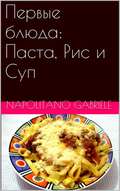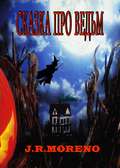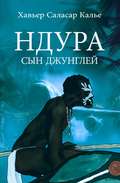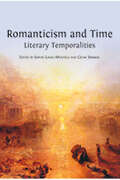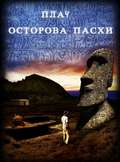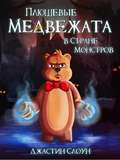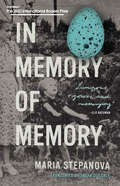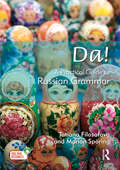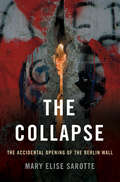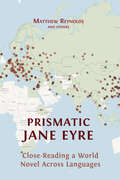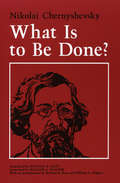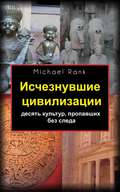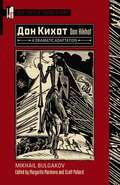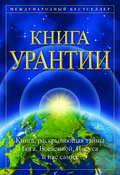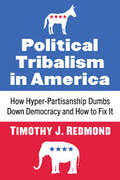- Table View
- List View
Первые блюда: Паста, Рис и Суп.
by Gabriele NapolitanoМножество рецептов одной итальянской мамы, чтобы приготовить по-настоящему вкусные, быстрые и изысканные первые блюда.
что у нас сегодня на десерт?
by Gabriele NapolitanoНе знаешь, что приготовить сегодня на десерт? Эта книга создана специально для тебя. Она содержит более тридцати рецептов, взятых из секретной записной книжки одной итальянской мамы.
Всё на своём месте
by Вероника Иванова Giulia Dell'UomoСаре чуть больше двадцати лет, когда у неё обнаружен рак. Болезнь, перевернув всю её жизнь, все же даёт возможность вступить в игру, продолжать строить планы, бороться и любить. Желание Сары прожить свою жизнь настолько велико, что даже отношения с врачом, Роберто, вырываются из больничных стен в «настоящую» жизнь, где любовь и страх переплетаются в вихре эмоций. А прошедшее время выражается госпитализациями, бесконечными анализами, слезами, улыбками, осознанием того, что болезнь не хочет уходить, физическим и душевным перерождение девушки, который пришлось слишком быстро стать женщиной.
Сказка Про Ведьм
by JOSE RAMON MORENO BERMEJO Валентина МазийСогласно легенде ужасные ведьмы забирали с собой всех детей из близлежащих деревень, которые не спали после десяти часов вечера. Летая на своих мётлах, ведьмы на больших расстояниях чуяли тех детей, которые ещё бодрствовали, и, проникая через окна и балконы, похищали их, чтобы держать в качестве слуг в своём логове, Проклятой горе. Ту гору окружал Заколдованный лес. Каждый, кто осмеливался пересечь его, был превращён в камень. И любая попытка родителей спасти своих детей заканчивалась новым несчастьем.Бедных детей ведьмы использовали в качестве прислуги, a тех, кто становился постарше, прекращали кормить и запирали в пещерах, оставляя их там на произвол судьбы.Деревенские жители, большинство из которых были обычными лесорубами, стали отчаиваться. Детей забирали ведьмы, а жителей деревень превращали в лесу в камни: всё казалось было потеряно для них.
Ндура. Сын джунглей.
by Javier Salazar Calle Альберто Гарсия СамсоновКогда обычный человек, любой из нас, вдруг оказывается на грани жизни и смерти, один, посреди непроходимых джунглей, он сможет выжить? Именно такая незамысловатая дилемма стоит перед героем нашей истории. Возвращаясь из отпуска, после заурядного сафари на джипах с фотоаппаратом в Намибии, он вдруг оказывается на грани выживания, после того, как их самолет был сбит какими-то повстанцами и упал в девственных джунглях Итури, в Республике Конго. Словом, наш герой нежданно-негаданно оказывается там, где дикая природа - отнюдь не единственный смертельный враг, и где просто выжить - далеко не единственная сверхзадача. Повествование, выдержанное в духе классической приключенческой литературы, переносит читателя из мира реального в мир, где всё пропитано тревогой и отчаянием главного героя от навалившихся на него несчастий. В этой книге естественным образом переплетаются между собой человеческие эмоции и нечеловеческое напряжение в борьбе за жизнь. По мере развития сюжета психологическая деградация героя гармонично вписывается в подробное описание окружающей его прир�
Rhoda ‘Comrade Kadalie, You Are Out of Order!’ A biography
by Joel PollakThis authorized biography was made possible through the gracious help of my mother-in-law, Rhoda Kadalie, who provided generous access to her files, letters, photographs, and extensive library of documents. She made time to sit with me for several hours of interviews from September through October 2021, to answer questions as they arose, and to offer innumerable clarifications. Rhoda also reviewed the first draft of the biography in December 2021, making corrections and additions, and contributing some of her own original vignettes, never before published.
An Outline of Romanticism in the West
by John Claiborne IsbellNavigating the landscape of Romantic literature and art across Europe and the Americas, An Outline of Romanticism in the West invites readers to embark upon a literary journey.
ПЛАЧ ОСТРОВА ПАСХИ
by Jose Vicente Alfaro Svetlana Lomakina de LeivaИспанский археолог становится частью амбициозной экспедиции, призванной с помощью археологических раскопок приоткрыть завесу тайн, окутывающих историю острова Пасхи. Жестокое убийство и желание совершить сенсационное антропологическое открытие приведут его к тому, что он окажется в центре заговора, главным героем которого ему придётся невольно оказаться. Хосе Висенте Альфаро предлагает нам совершить путешествие, полное загадок, к одному из самых захватывающих мест планеты. Страницы его книги дадут нам возможность познакомиться с культурой рапануи, с историей острова Пасхи, остановившись на её самых значительных эпизодах: загадочное происхождение его первых поселенцев, создание и транспортировка выдающихся статуй моаи, жестокие междуусобные войны, культ Человека-птицы, нерасшифрованная иероглифическая письменность, контакты с первыми европейскими путешественниками и евангелизация, осуществлённая католическими миссионерами, незадолго до аннексии острова к Чили в конце XIX века. Осмелитесь ли Вы разгадать бережно хранимый секрет острова Пасхи?
Плюшевые медвежата в Стране Монстров
by Simeon Leyzerzon Justin SloanПлюшевые медвежата спасают детей. Эта и другие книги Джастина Слоуна из его серии приключенческих книг для малышей доступны на его страничке в интернете: www.JustinSloanAuthor.com Чтобы спасти своего хозяина, однажды похищенного во мраке ночи, плюшевый мишка вынужден отправиться на его поиски в Страну Монстров. Оказывается, беда случилась не только с ним одним - угроза нависла над всеми детьми. Добро пожаловать в мир, где плюшевые медвежата по ночам оживают, вставая на защиту своих хозяев-детей от монстров мрака, подстрекаемых гоблинами и орками. Эта первая книга трилогии привлечёт маленьких любителей приключений, которым по душе фантастика в стиле мультфильмов Пиксара и Уолта Диснея, а те, кто повзрослее, несомненно распознают в ней параллели с балладами об Орфее и с дантовским адом. Пристегните ремни и приятного Вам путешествия!
In Memory of Memory
by Maria Stepanova Sasha DugdaleShortlisted for the 2021 International Booker Prize Winner of the 2018 Bolshaya Kniga Award Winner of the 2019 NOS Literature PrizeAn exciting contemporary Russian writer explores terra incognita: the still-living margins of history.With the death of her aunt, the narrator is left to sift through an apartment full of faded photographs, old postcards, letters, diaries, and heaps of souvenirs: a withered repository of a century of life in Russia. Carefully reassembled with calm, steady hands, these shards tell the story of how a seemingly ordinary Jewish family somehow managed to survive the myriad persecutions and repressions of the last century.In dialogue with writers like Roland Barthes, W. G. Sebald, Susan Sontag, and Osip Mandelstam, In Memory of Memory is imbued with rare intellectual curiosity and a wonderfully soft-spoken, poetic voice. Dipping into various forms—essay, fiction, memoir, travelogue, and historical documents—Stepanova assembles a vast panorama of ideas and personalities, offering an entirely new and bold exploration of cultural and personal memory.Praise for In Memory of Memory:"A luminous, rigorous, and mesmerizing interrogation of the relationship between personal history, family history, and capital-H History. I couldn't put it down; it felt sort of like watching a hypnotic YouTube unboxing-video of the gift-and-burden that is the twentieth century. In Memory of Memory has that trick of feeling both completely original and already classic, and I confidently expect this translation to bring Maria Stepanova a rabid American fan base on the order of the one she already enjoys in Russia." —Elif Batuman, author of The Idiot, finalist for the Pulizter Prize for Fiction"There is simply no book in contemporary Russian literature like In Memory of Memory. A microcosm all its own, it is an inimitable journey through a family history which, as the reader quickly realizes, becomes a much larger quest than yet another captivating family narrative. Why? Because it asks us if history can be examined at all, yes, but does so with incredible lyricism and fearlessness. Because Stepanova teaches us to find beauty where no one else sees it. Because Stepanova teaches us to show tenderness towards the tiny, awkward, missed details of our beautiful private lives. Because she shows us that in the end our hidden strangeness is what makes us human. This, I think, is what makes her a truly major European writer. I am especially grateful to Sasha Dugdale for her precise and flawless translation which makes this book such a joy to read in English. This is a voice to live with." —Ilya Kaminsky, author of Deaf Republic"Dazzling erudition and deep empathy come together in Maria Stepanova's profound engagement with the power and potential of memory, the mother of all muses. An exploration of the vast field between reminiscence and remembrance, In Memory of Memory is a poetic appraisal of the ways the stories of others are the fabric of our history." —Esther Kinsky, author of Grove"A book to plunge into. 'Everyone else's ancestors had taken part in history' writes Stepanova; building itself via accumulation, these chapters become an important testimony to the cultural and political lives of the people held beneath the surface of the tides of history" —Andrew McMillan, author of Playtime
Da! A Practical Guide to Russian Grammar
by Tatiana Filosofova Marion SporingDa! A Practical Guide to Russian Grammar is a concise and contemporary combined reference grammar and workbook for intermediate-level students, and is ideal for use both in the classroom and for self-study.The book contains clear explanations of the core areas of Russian grammar. Each point is illustrated with examples of contemporary language usage showing you how grammar works in practice while at the same time enhancing your vocabulary and cultural knowledge. Every chapter ends with a variety of exercises to test your progress and consolidate your understanding. Da! A Practical Guide to Russian Grammar features:Tables to help you absorb more easily specific rules of grammar.Level indicators so you can tailor learning to suit your ability and progress with confidence.In-text icons that identify difficult points of grammar for you so you know where you need to focus that little bit harderA glossary to aid your understanding of complex grammatical terms.Exercises at the ends of chapters so you can test your comprehensionAnswers to Exercises so you can check your own work.With free access to online, interactive exercises with audio that give you practice listening and pronouncing Russian, Da! A Practical Guide to Russian Grammar is one of the most comprehensive resources for Russian grammar available.
The Collapse: The Accidental Opening of the Berlin Wall
by Mary Elise SarotteThe Berlin Wall was erected in 1961 to end all traffic between the city’s two halves: the democratic west and the communist east. The iconic symbol of a divided Europe, the Wall became a focus of western political pressure on East Germany; as Ronald Reagan’s famously said in a 1987 speech in Berlin, "Mr. Gorbachev, tear down this wall!” But as award-winning historian Mary Sarotte shows in [Title TK] , the opening of the Wall on November 9, 1989 was not, as is commonly believed, the East German government’s deliberate concession to outside influence. It was an accident. A carelessly worded memo written by mid-level bureaucrats, a bumbling press conference given by an inept member of the East German Politburo, the negligence of government leaders, the bravery of ordinary people in East and West Berlin--these combined to bring about the end of nearly forty years of oppression, fear, and enmity in divided Berlin. When the news broke, Washington and Moscow could only stand by and watch as Tom Brokaw and other journalists narrated the televised broadcast of this critical moment in the thawing of the cold war. Sarotte opens her story in the months leading up to that fateful day. Following East German dissidents, she shows how their efforts coalesced around opposition to the regime’s restrictions on foreign travel. The city of Leipzig, close to the border with Czechoslovakia, became a hothouse of activism, and protests there quickly grew into massive demonstrations. The East German Politburo hoped to limit its citizens’ knowledge of these marches, but two daring dissidents, East Berliners Aram Radomski and Siegbert Schefke, managed to evade the Stasi and film the largest of them from a church tower. They then smuggled their tape to West Germany; broadcast in both nations, the footage galvanized activists across East Germany, and precipitated the stunning developments on November 9. Facing mounting pressure from its own citizens, the East German Politburo planned to put off enacting any meaningful change to its travel policy by issuing a deceptive ruling that would appear to offer more freedom, but which in fact would allow the state to maintain strict control over its citizen’s movements. But the bureaucrats tasked with preparing the "new” regulations misunderstood their task, and instead drafted a declaration that said East Germans could freely leave the country. This declaration ended up in the hands of regime spokesman Günter Schabowski, who announced the rules at a press conference without understanding their import. Stunned reporters were soon broadcasting the news around the world. Crowds of East Germans began streaming to the Wall, prompting a showdown with border guards, who received no support or direction from East German leadership as the throngs multiplied. By 11:30, Harald Jäger, a second-tier passport control officer, had had enough and finally opened the wall to the mob gathering outside his gate. Even though East German forces successfully regained control by the morning, it was too late--for the wall, for the regime, and for Communism in Eastern Europe. Drawing on evidence from archives in multiple countries and languages, along with dozens of interviews with key actors, including Harald Jäger, [Title TK] is the definitive account of the event that brought down the East German Politburo and came to represent the final collapse of the Cold War order.
Prismatic Jane Eyre: Close-Reading a World Novel Across Languages
by Matthew Reynolds OthersJane Eyre, written by Charlotte Brontë and first published in 1847, has been translated more than five hundred times into over sixty languages. Prismatic Jane Eyre argues that we should see these many re-writings, not as simple replications of the novel, but as a release of its multiple interpretative possibilities: in other words, as a prism. Prismatic Jane Eyre develops the theoretical ramifications of this idea, and reads Brontë’s novel in the light of them: together, the English text and the many translations form one vast entity, a multilingual world-work, spanning many times and places, from Cuba in 1850 to 21st-century China; from Calcutta to Bologna, Argentina to Iran. Co-written by many scholars, Prismatic Jane Eyre traces the receptions of the novel across cultures, showing why, when and where it has been translated (and no less significantly, not translated – as in Swahili), and exploring its global publishing history with digital maps and carousels of cover images. Above all, the co-authors read the translations and the English text closely, and together, showing in detail how the novel’s feminist power, its political complexities and its romantic appeal play out differently in different contexts and in the varied styles and idioms of individual translators. Tracking key words such as ‘passion’ and ‘plain’ across many languages via interactive visualisations and comparative analysis, Prismatic Jane Eyre opens a wholly new perspective on Brontë’s novel, and provides a model for the collaborative close-reading of world literature. Prismatic Jane Eyre is a major intervention in translation and reception studies and world and comparative literature. It will also interest scholars of English literature, and readers of the Brontës.
What Is to Be Done?
by Michael R. Katz Nikolai Chernyshevsky William G. Wagner"No work in modern literature, with the possible exception of Uncle Tom's Cabin, can compete with What Is to Be Done? in its effect on human lives and its power to make history. For Chernyshevsky's novel, far more than Marx's Capital, supplied the emotional dynamic that eventually went to make the Russian Revolution."--Joseph Frank, The Southern ReviewAlmost from the moment of its publication in 1863, Nikolai Chernyshevsky's novel, What Is to Be Done?, had a profound impact on the course of Russian literature and politics. The idealized image it offered of dedicated and self-sacrificing intellectuals transforming society by means of scientific knowledge served as a model of inspiration for Russia's revolutionary intelligentsia. On the one hand, the novel's condemnation of moderate reform helped to bring about the irrevocable break between radical intellectuals and liberal reformers; on the other, Chernyshevsky's socialist vision polarized conservatives' opposition to institutional reform. Lenin himself called Chernyshevsky "the greatest and most talented representative of socialism before Marx"; and the controversy surrounding What Is to Be Done? exacerbated the conflicts that eventually led to the Russian Revolution.Michael R. Katz's readable and compelling translation is now the definitive unabridged English-language version, brilliantly capturing the extraordinary qualities of the original. William G. Wagner has provided full annotations to Chernyshevsky's allusions and references and to the, sources of his ideas, and has appended a critical bibliography. An introduction by Katz and Wagner places the novel in the context of nineteenth-century Russian social, political, and intellectual history and literature, and explores its importance for several generations of Russian radicals.
Исчезнувшие Цивилизации: Десять Культур, Пропавших Без Следа
by Michael Rank Simeon LeyzerzonАвтор известного бестселлера "Великие Генералы Истории" представляет свою новую работу о бесследно исчезнувших великих культурах древности, и о том как они преследуют нас и сегодня. От погибшей Атлантиды Платона, высокотехнологической утопии, поглощённой океаном всего за один скорбный день и американской колонии Роанок, чьих жителей поглотили дикие леса неосвоенного континента, до древних исследователей Америки, прибывших на континент за две тысячи лет до Колумба - исчезновение этих обществ загадочны и неправдоподобны. В книге описаны десять цивилизаций, когда то существовавших, а сейчас полностью исчезнувших. Некоторые из них на века опередили соседей в развитии, другие оставили для нас неразрешимые тайны. Книга предлагает версии различных гипотез о том, как культуры, длившиеся веками, могут бесследно изчезнуть, а также и полезные уроки, которые мы, современные жители планеты земля, можем из этих исчезновений для себя извлечь.
Дон Кихот [Don Kikhot]: A Dramatic Adaptation (Texts and Translations #29)
by Mikhail BulgakovWhen Soviet censors approved Mikhail Bulgakov's ??? ?????, a stage adaptation of Don Quixote, they were unaware that they were sanctioning a subtle but powerful criticism of Stalinist rule. The author, whose novel ?????? ? ????????? would eventually bring him world renown, achieved this sleight of hand through a deft interpretation of Cervantes's knight. Bulgakov's Don Quixote fits comfortably into the nineteenth-century Russian tradition of idealistic, troubled intellectuals, but Quixote's quest becomes an allegory of the artist under the strictures of Stalin's regime. Bulgakov did not live to see the play performed: it went into production in 1940, only months after his death.The volume's introduction provides background for Bulgakov's adaptation and compares Bulgakov with Cervantes and the twentieth-century Russian work with the seventeenth-century Spanish work.
Translating Russian Literature in the Global Context
by Muireann Maguire Cathy McAteerTranslating Russian Literature in the Global Context examines the translation and reception of Russian literature as a world-wide process. This volume aims to provoke new debate about the continued currency of Russian literature as symbolic capital for international readers, in particular for nations seeking to create or consolidate cultural and political leverage in the so-called ‘World Republic of Letters’. It also seeks to examine and contrast the mechanisms of the translation and uses of Russian literature across the globe. This collection presents academic essays, grouped according to geographical location, by thirty-seven international scholars. Collectively, their expertise encompasses the global reception of Russian literature in Europe, the Former Soviet Republics, Africa, the Americas, and Asia. Their scholarship concentrates on two fundamental research areas: firstly, constructing a historical survey of the translation, publication, distribution and reception of Russian literature, or of one or more specific Russophone authors, in a given nation, language, or region; and secondly, outlining a socio-cultural microhistory of how a specific, highly influential local writer, genre, or literary group within the target culture has translated, transmitted, or adapted aspects of Russian literature in their own literary production. Each section is prefaced with a short essay by the co-editors, surveying the history of the reception of Russian literature in the given region. Considered as a whole, these chapters offer a wholly new overview of the extent and intercultural penetration of Russian and Soviet literary soft power during the twentieth and twenty-first centuries. This volume will open up Slavonic Translation Studies for the general reader, the student of Comparative Literature, and the academic scholar alike.
How Divine Images Became Art
by Oleg TarasovHow Divine Images Became Art tells the story of the parallel ‘discovery’ of Russian medieval art and of the Italian ‘primitives’ at the beginning of the twentieth century. While these two developments are well-known, they are usually studied in isolation. Tarasov’s study has the great merit of showing the connection between the art world in Russia and the West, and its impact in the cultural history of the continent in the pre-war period.
Книга Урантии
by Urantia FoundationYou have just discovered the literary masterpiece that answers your questions about God, life in the inhabited universe, the history and future of this world, and the life of Jesus. The Urantia Book harmonizes history, science, and religion into a philosophy of living that brings new meaning and hope into your life. If you are searching for answers, read The Urantia Book! The world needs new spiritual truth that provides modern men and women with an intellectual pathway into a personal relationship with God. Building on the world's religious heritage, The Urantia Book describes an endless destiny for humankind, teaching that living faith is the key to personal spiritual progress and eternal survival. These teachings provide new truths powerful enough to uplift and advance human thinking and believing for the next 1000 years. A third of The Urantia Book is the inspiring story of Jesus' entire life and a revelation of his original teachings. This panoramic narrative includes his birth, childhood, teenage years, adult travels and adventures, public ministry, crucifixion, and 19 resurrection appearances. This inspiring story recasts Jesus from the leading figure of Christianity into the guide for seekers of all faiths and all walks of life. This book is a revelation.
